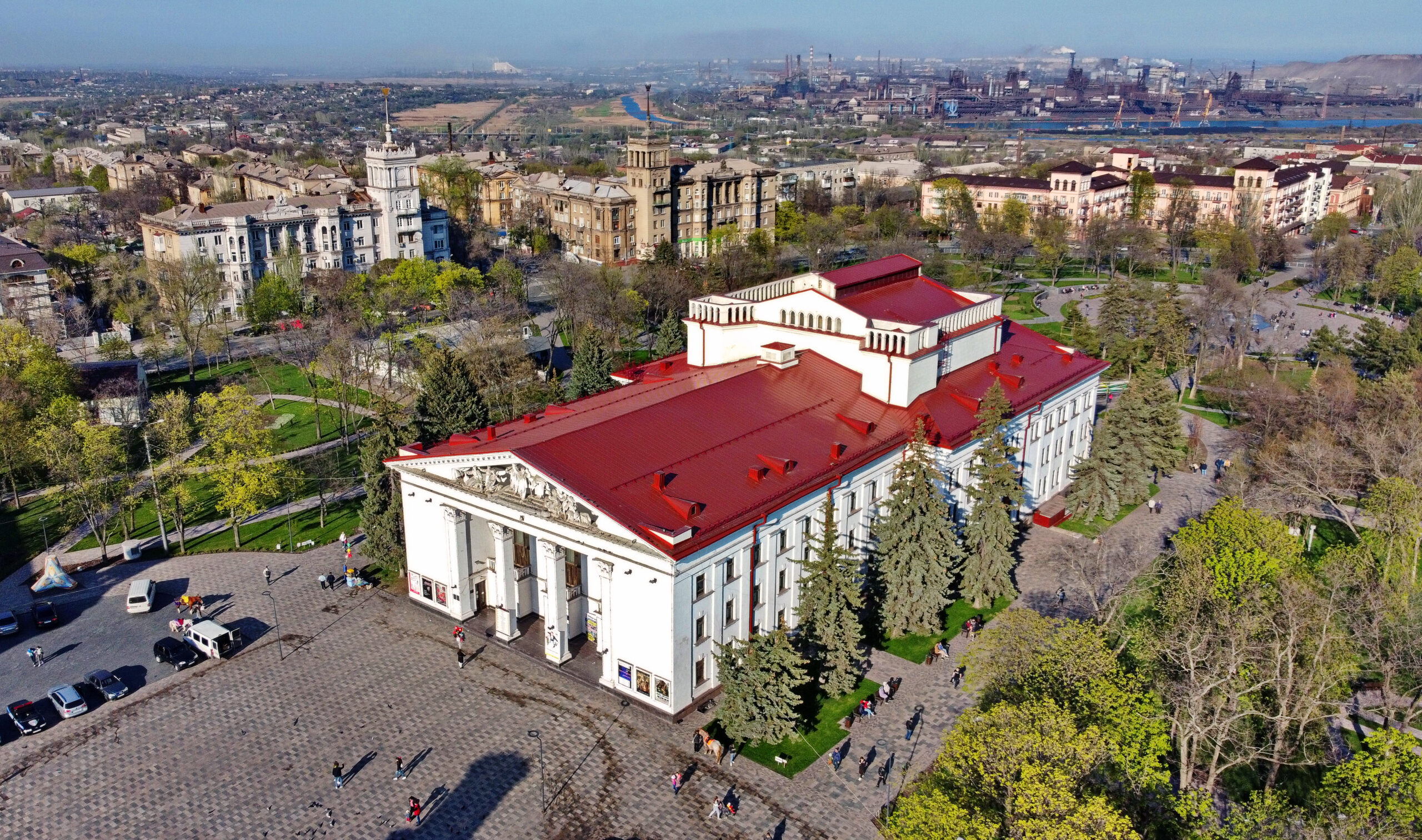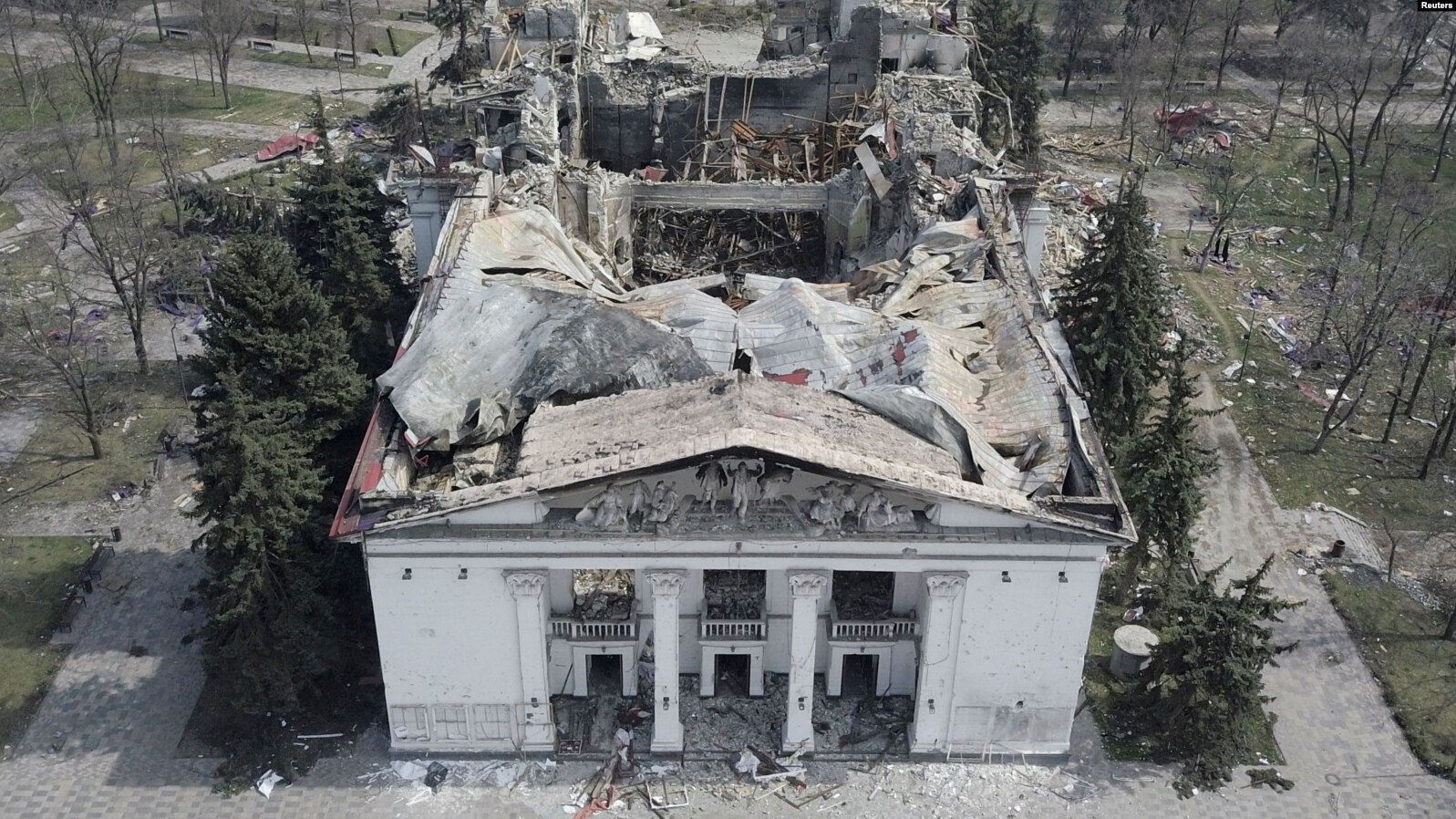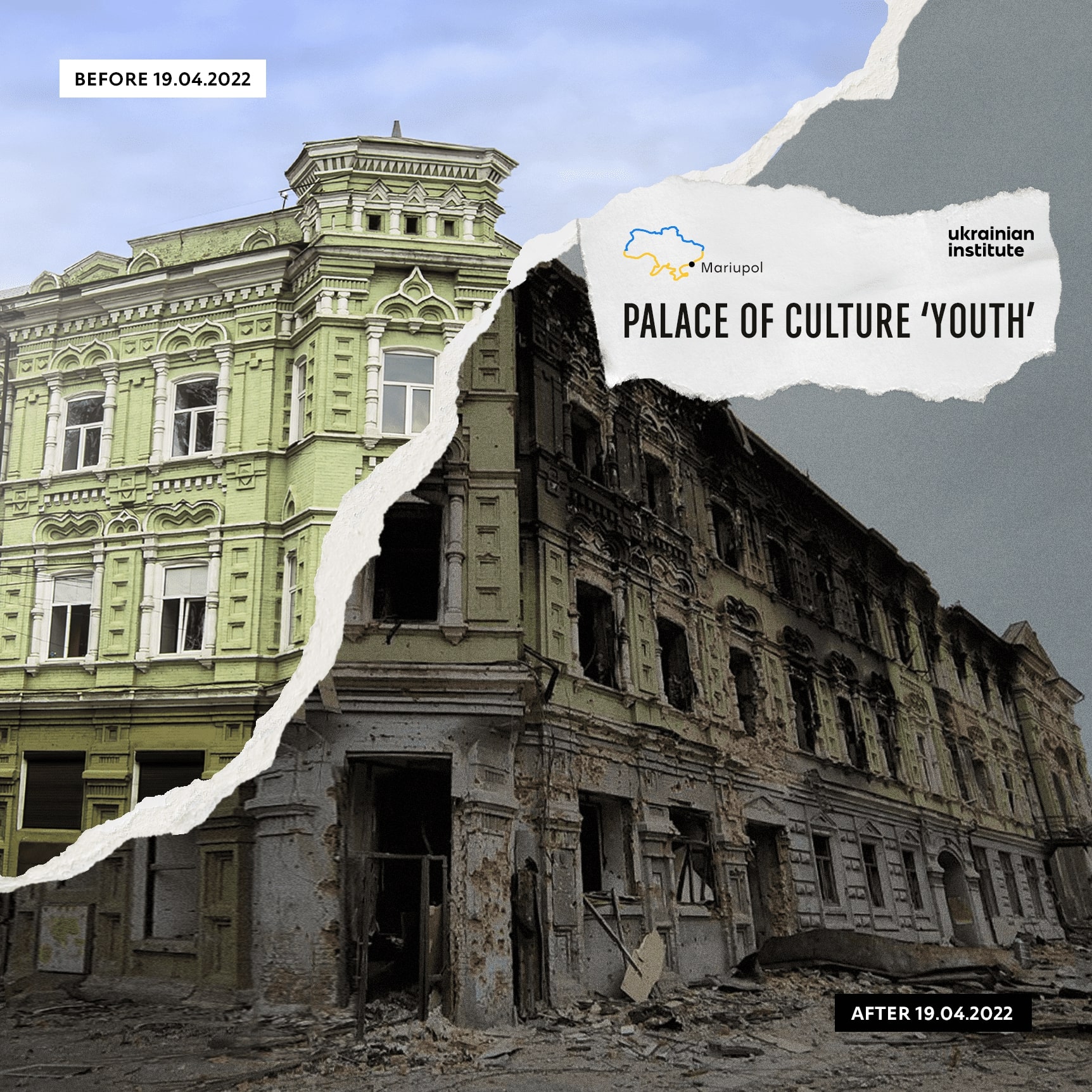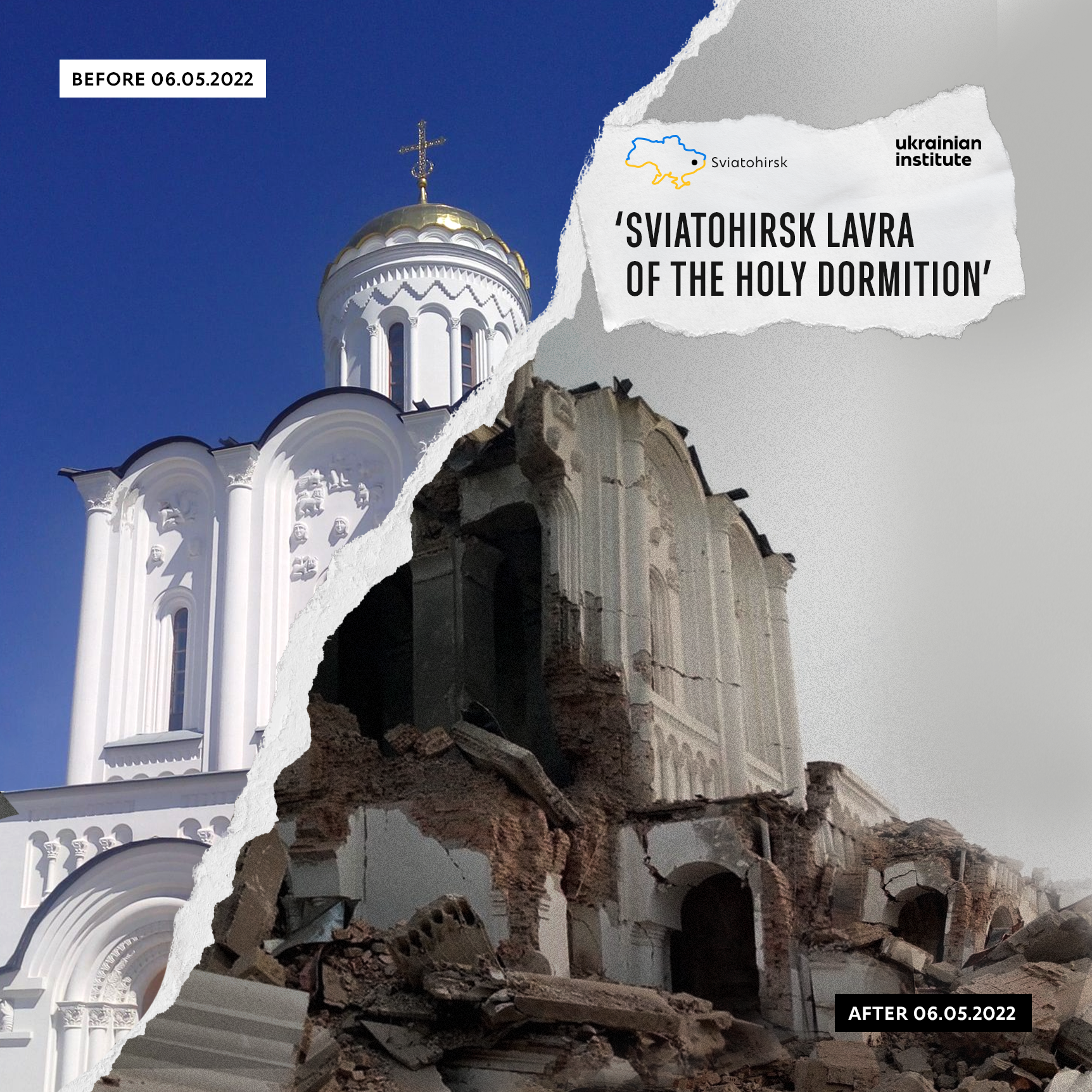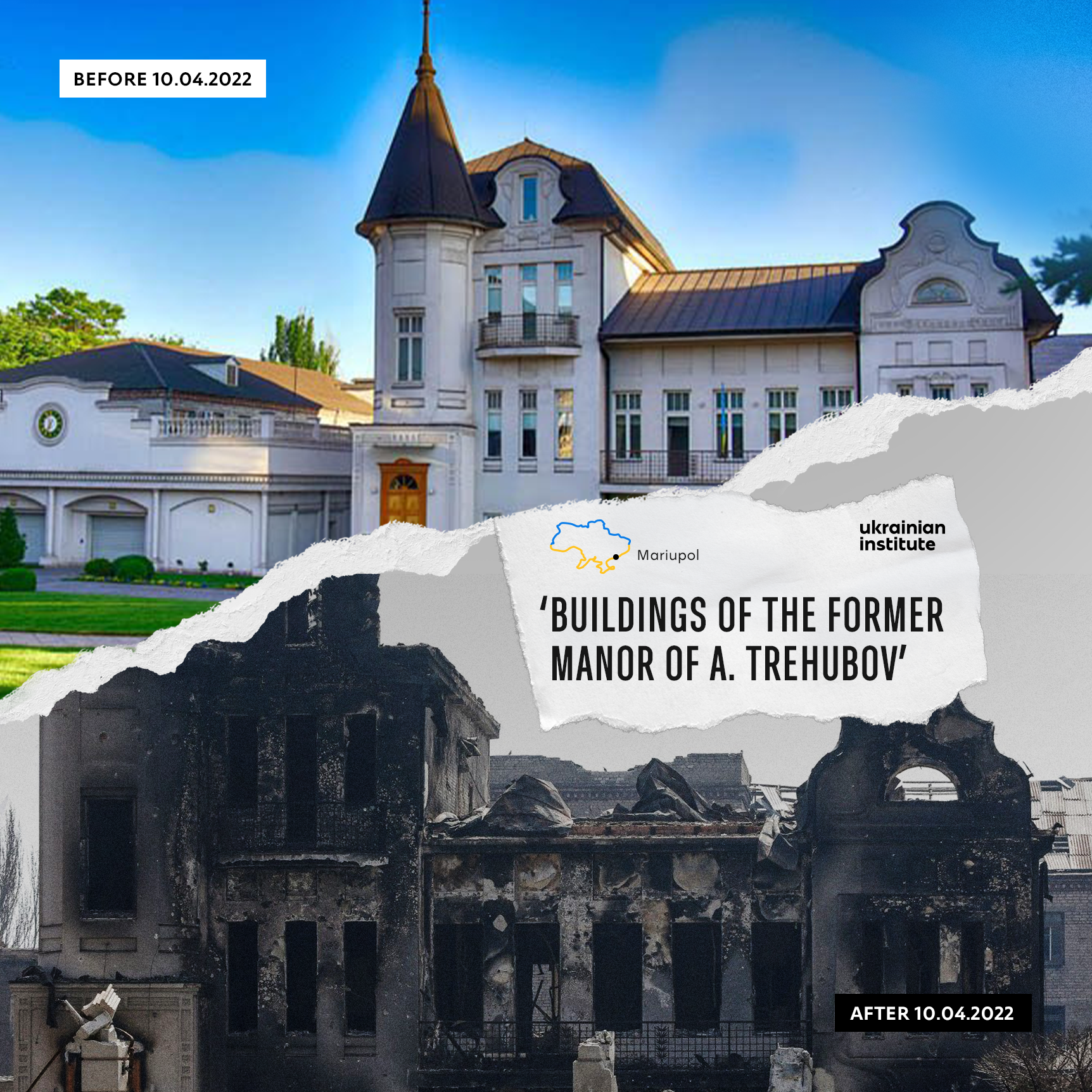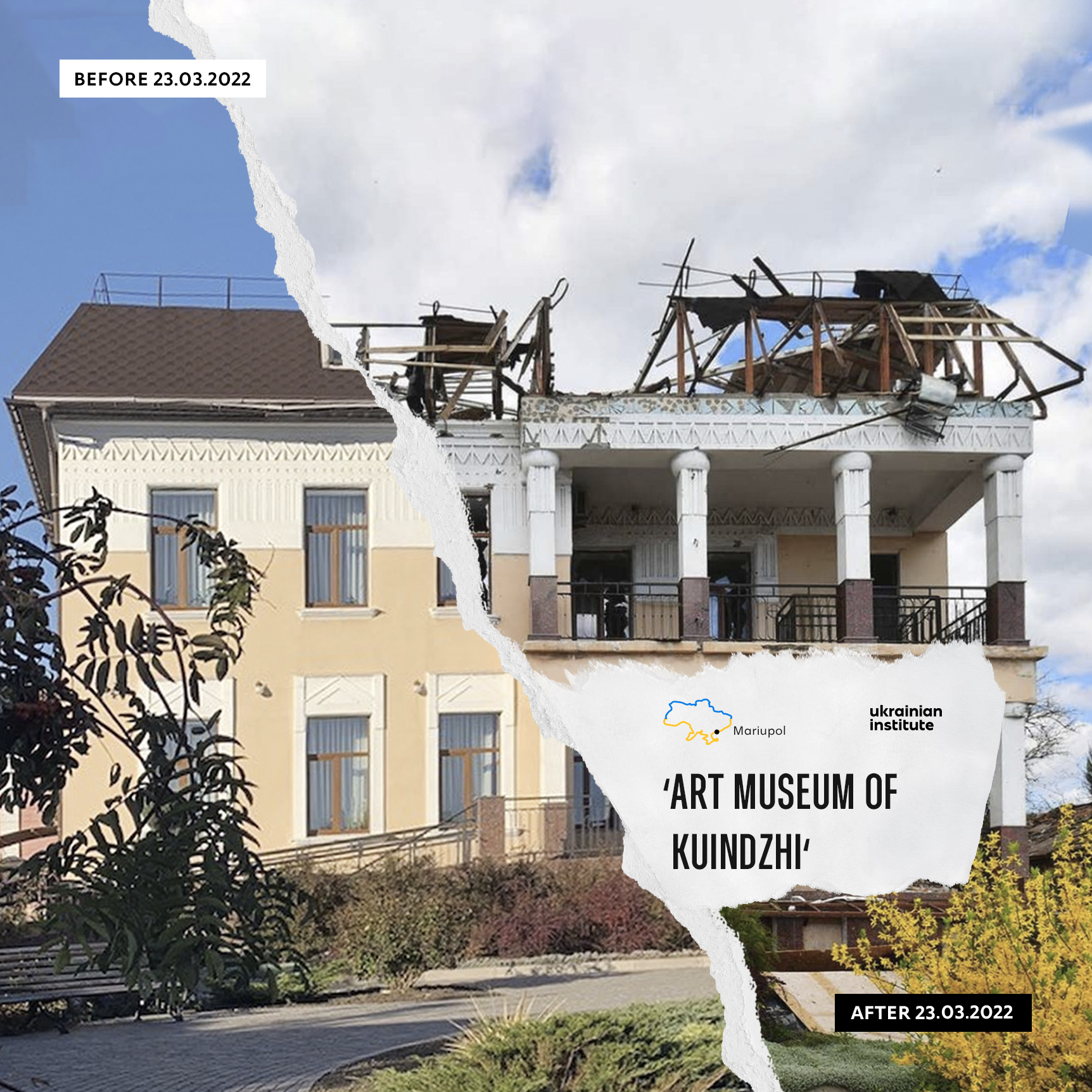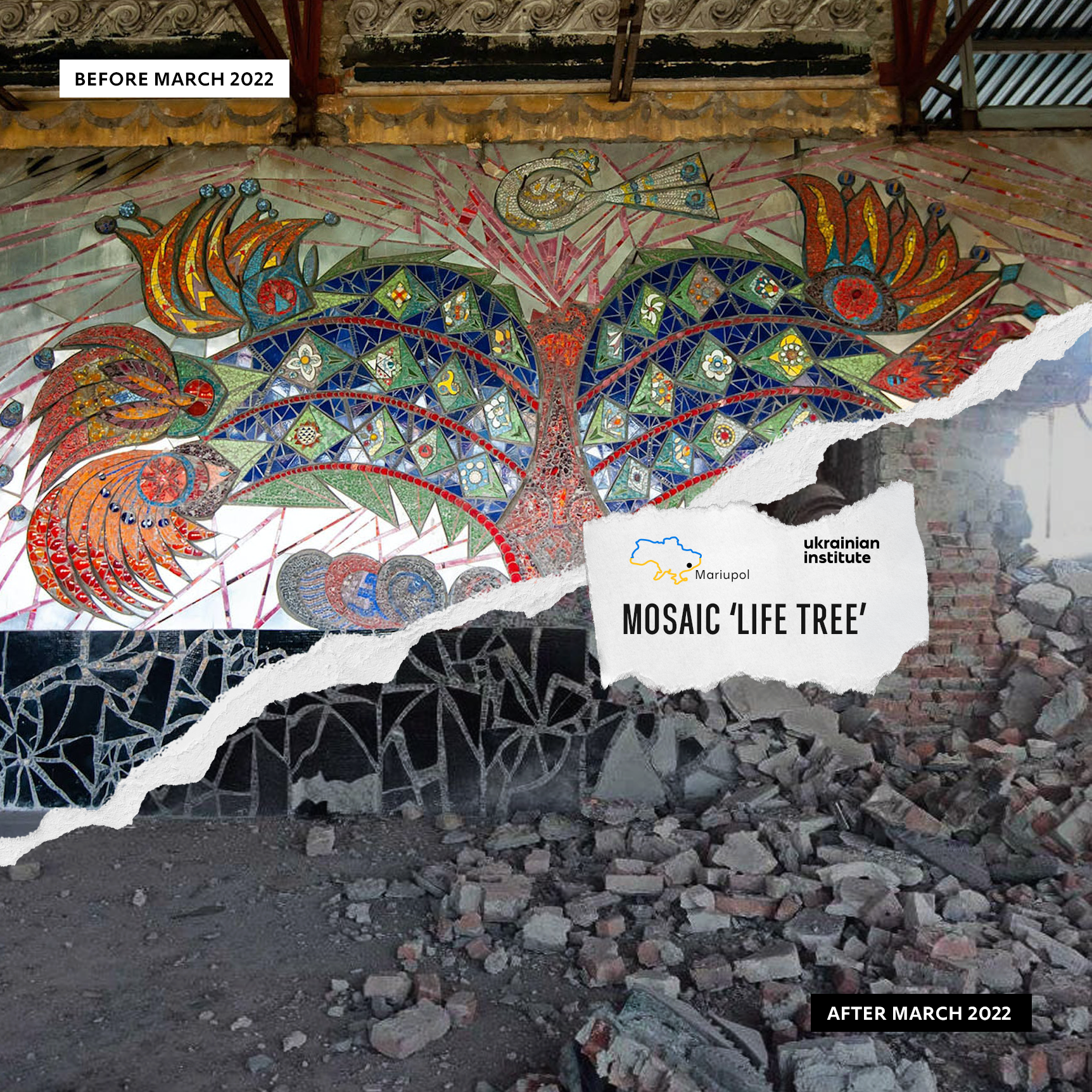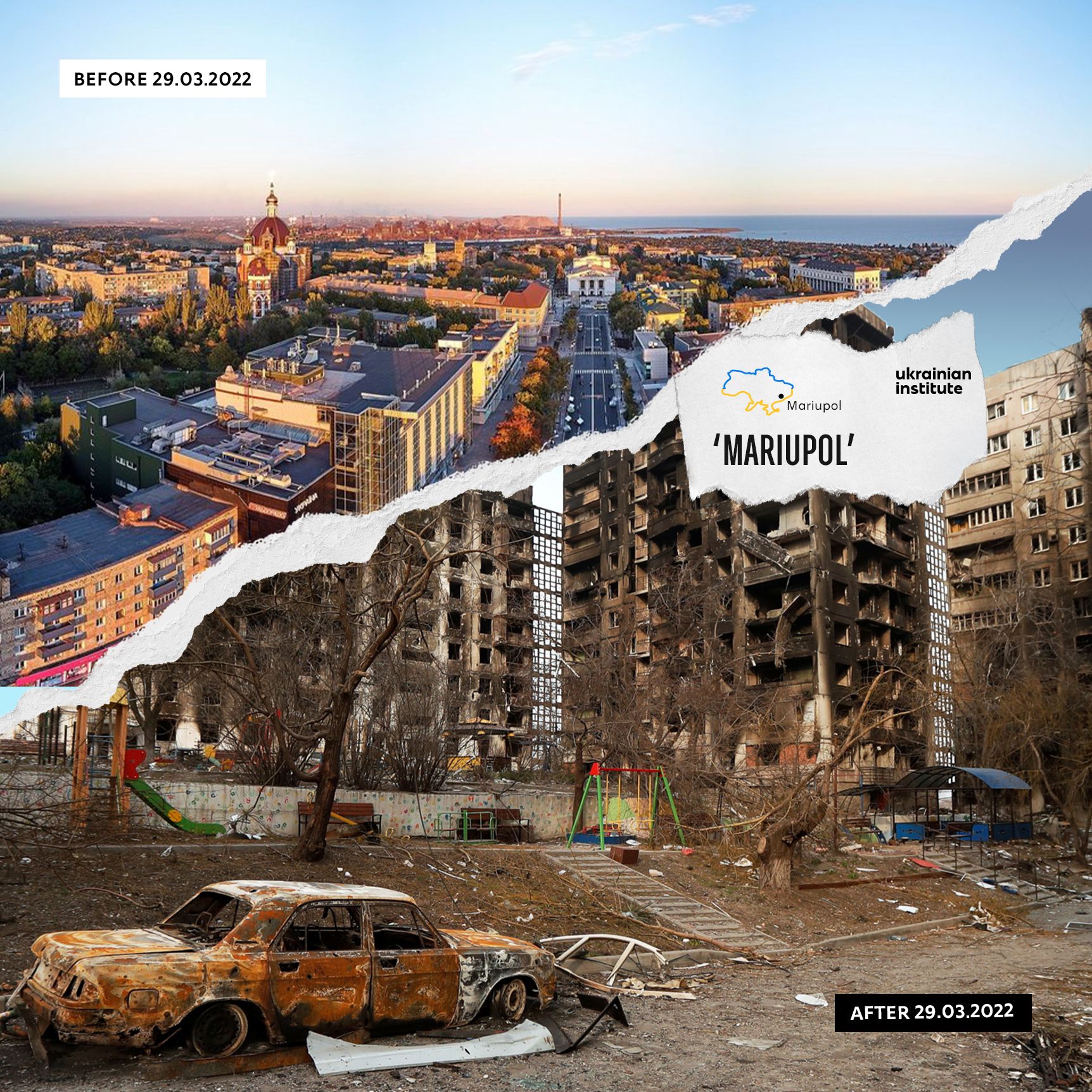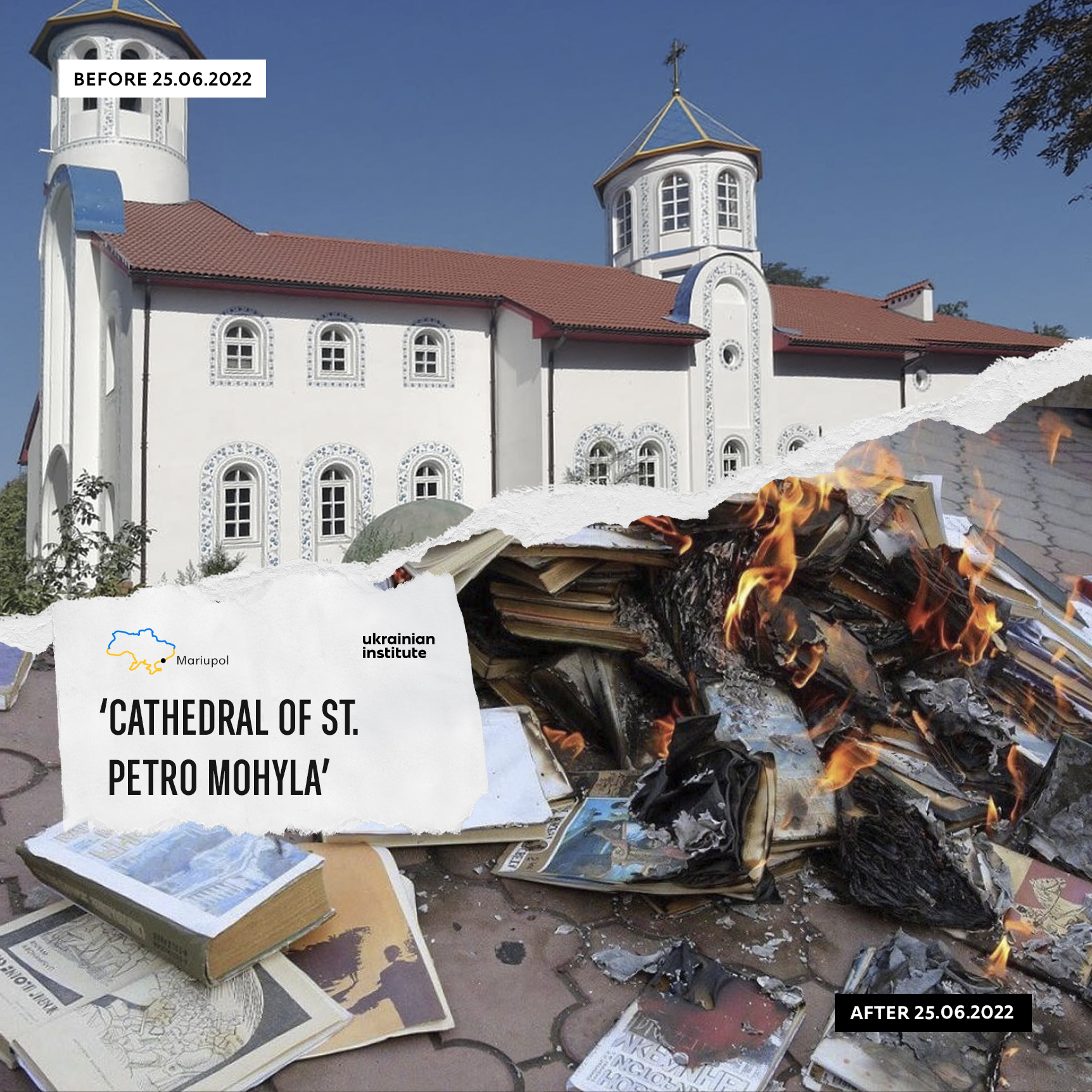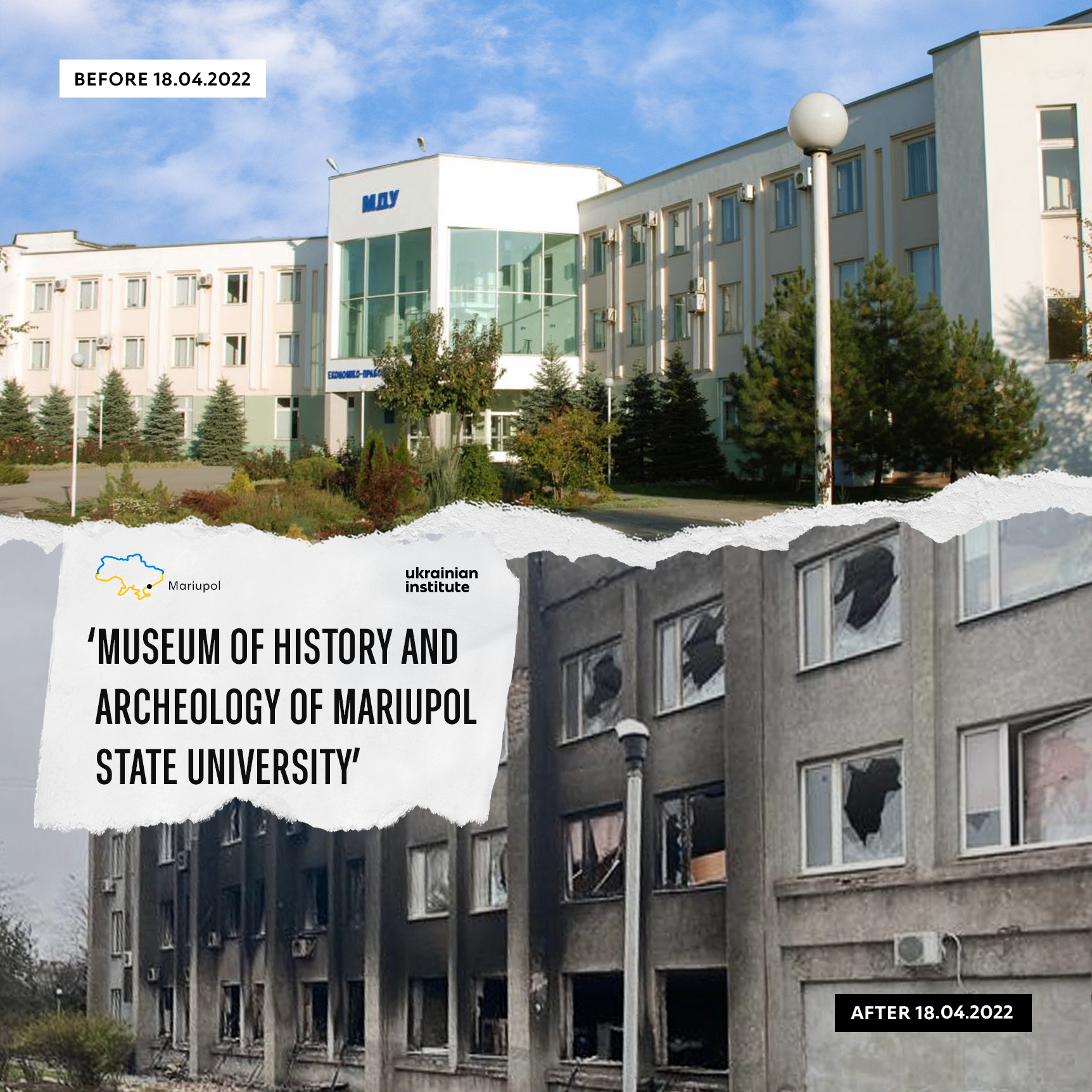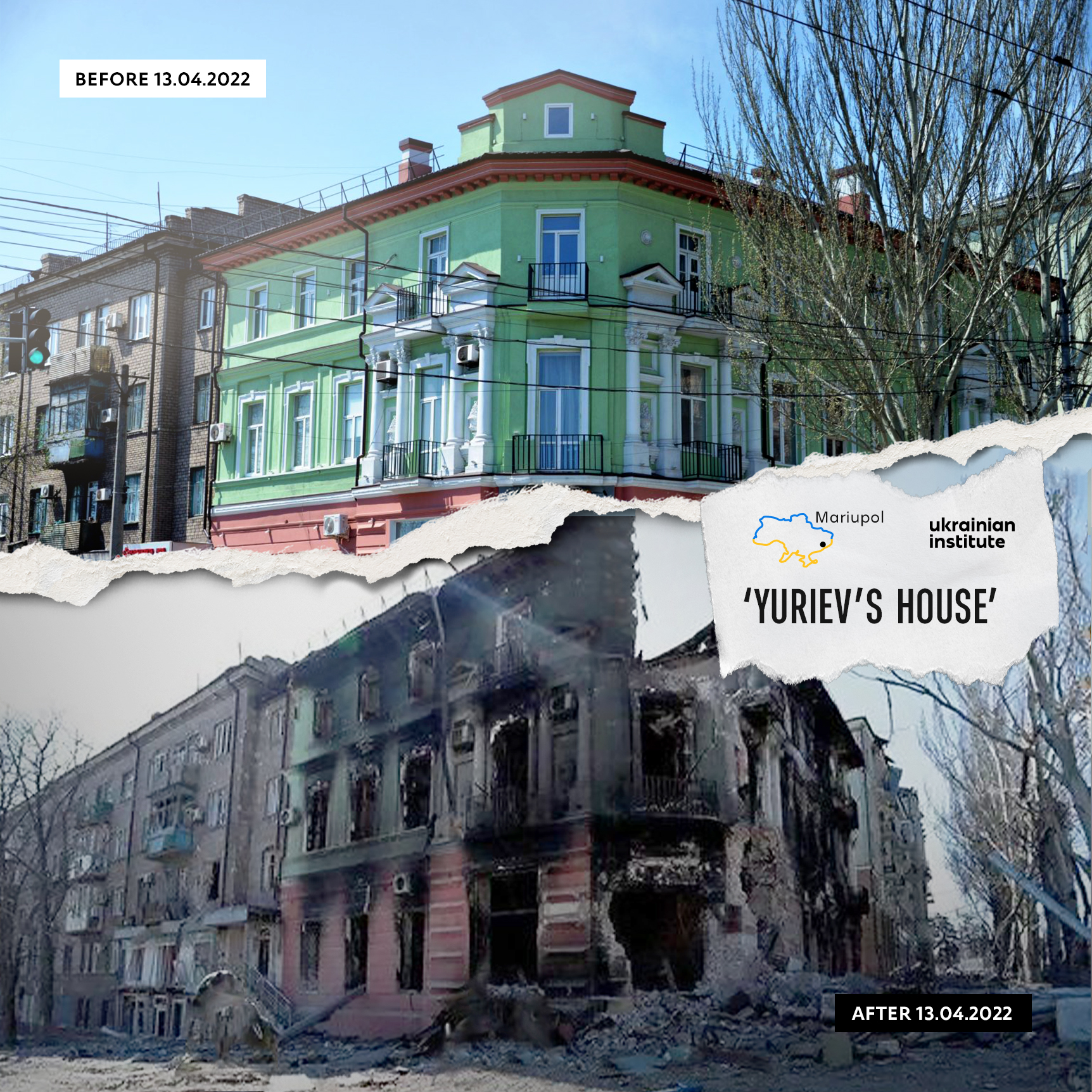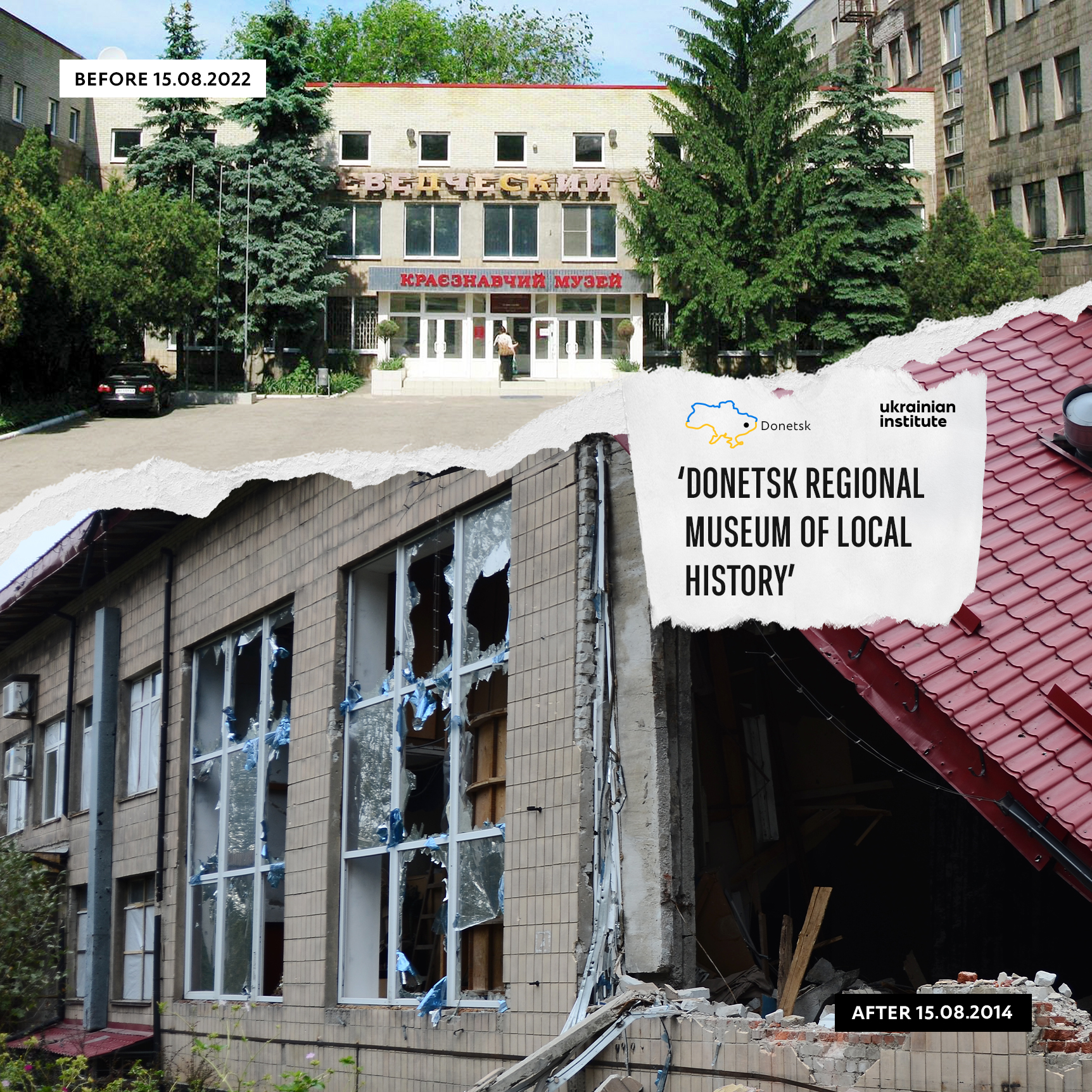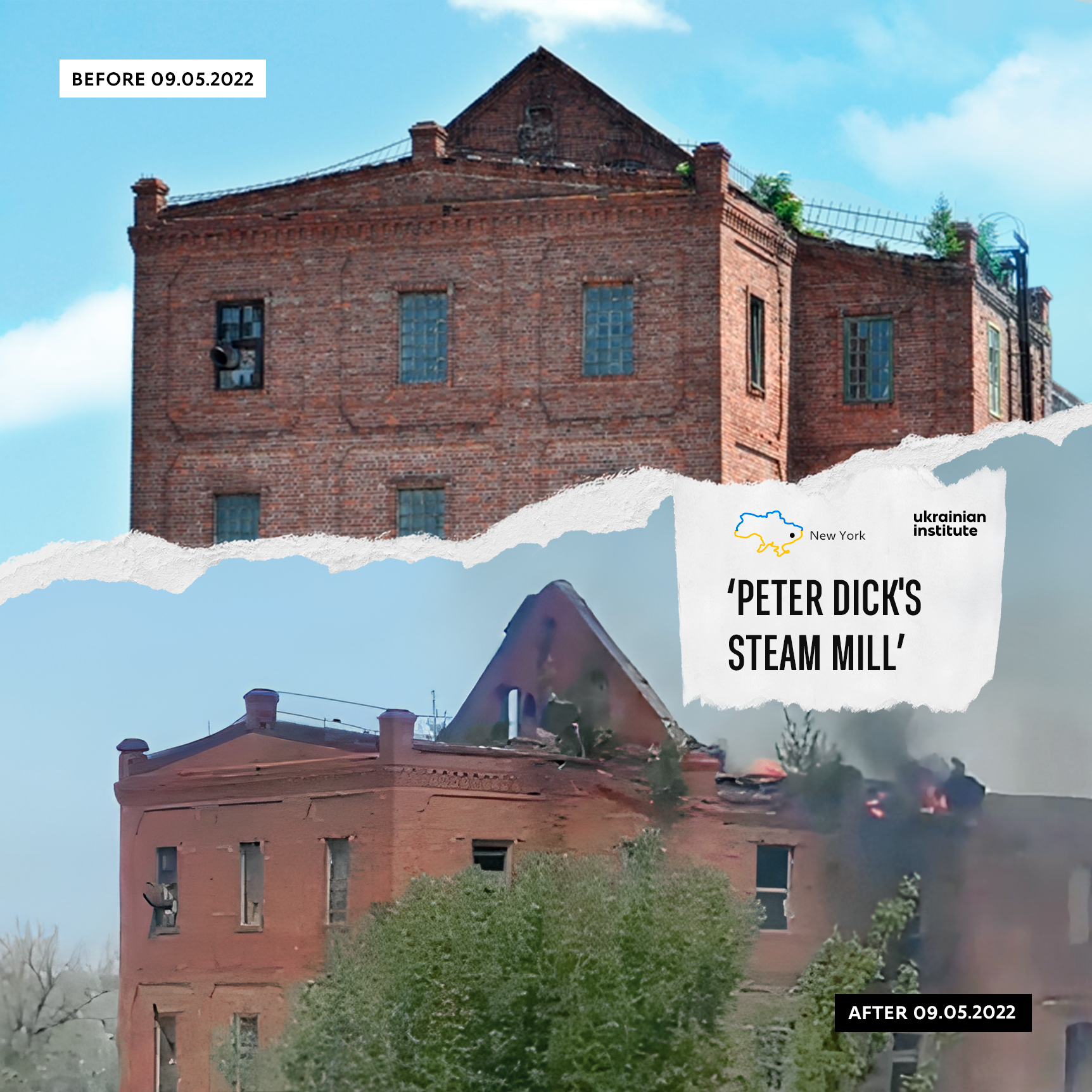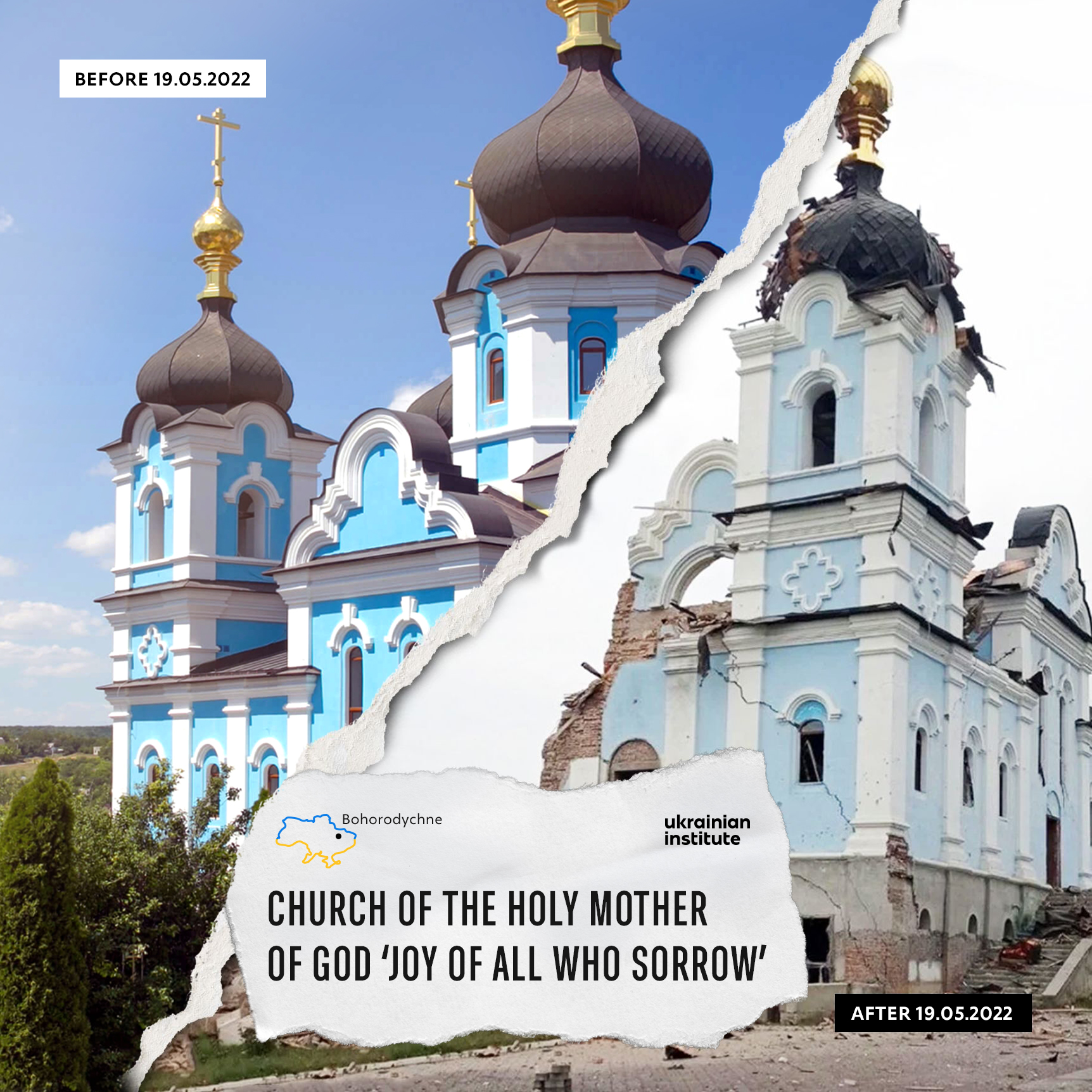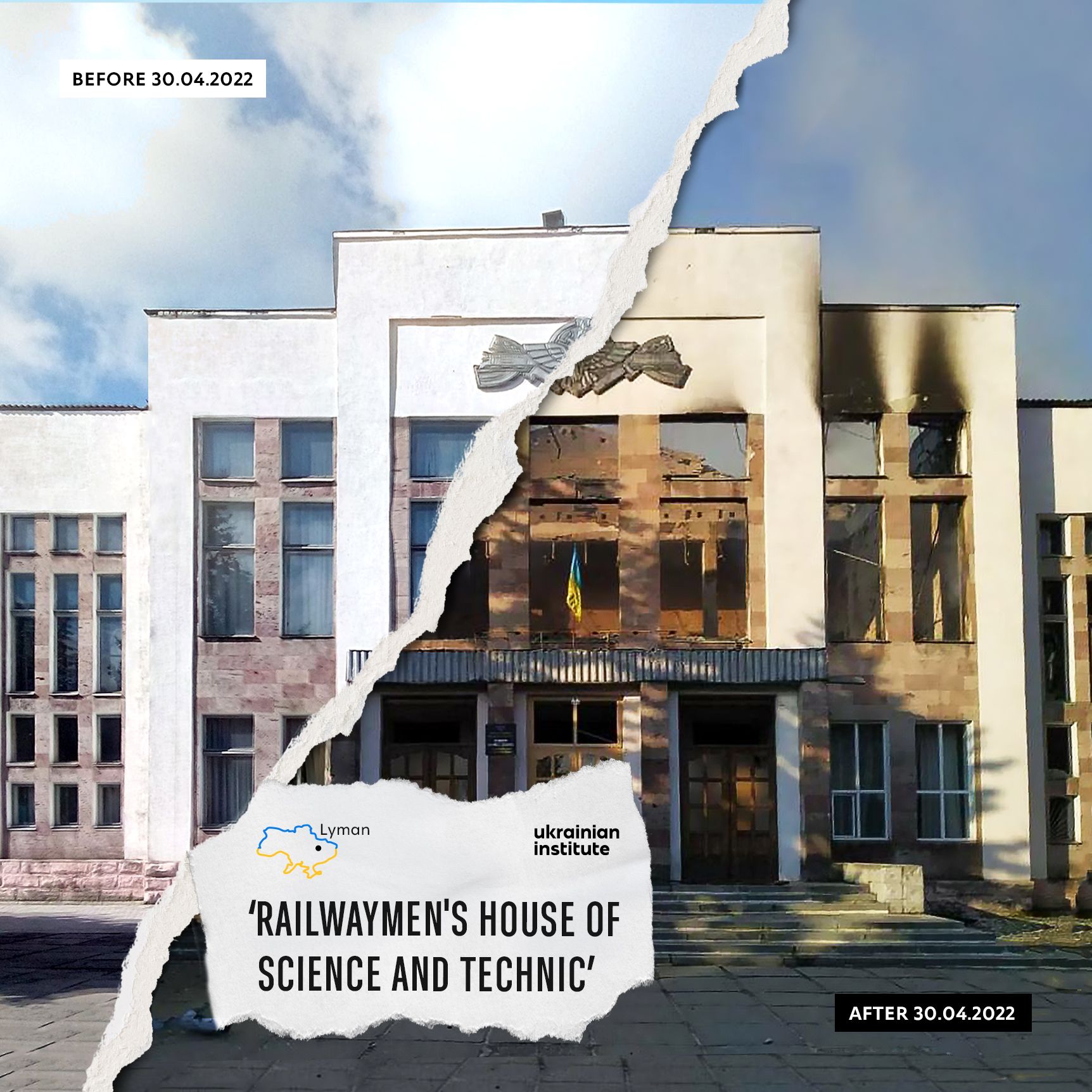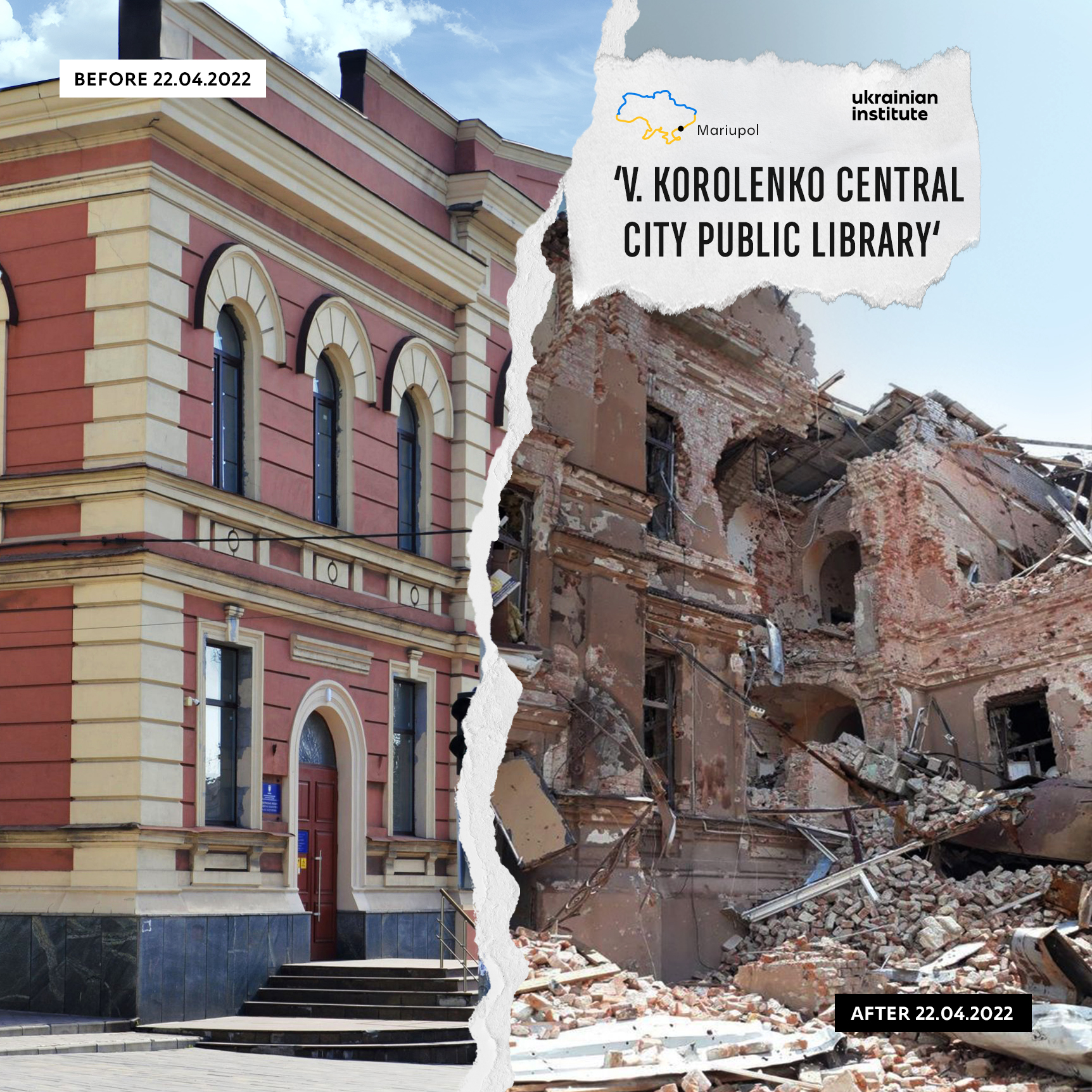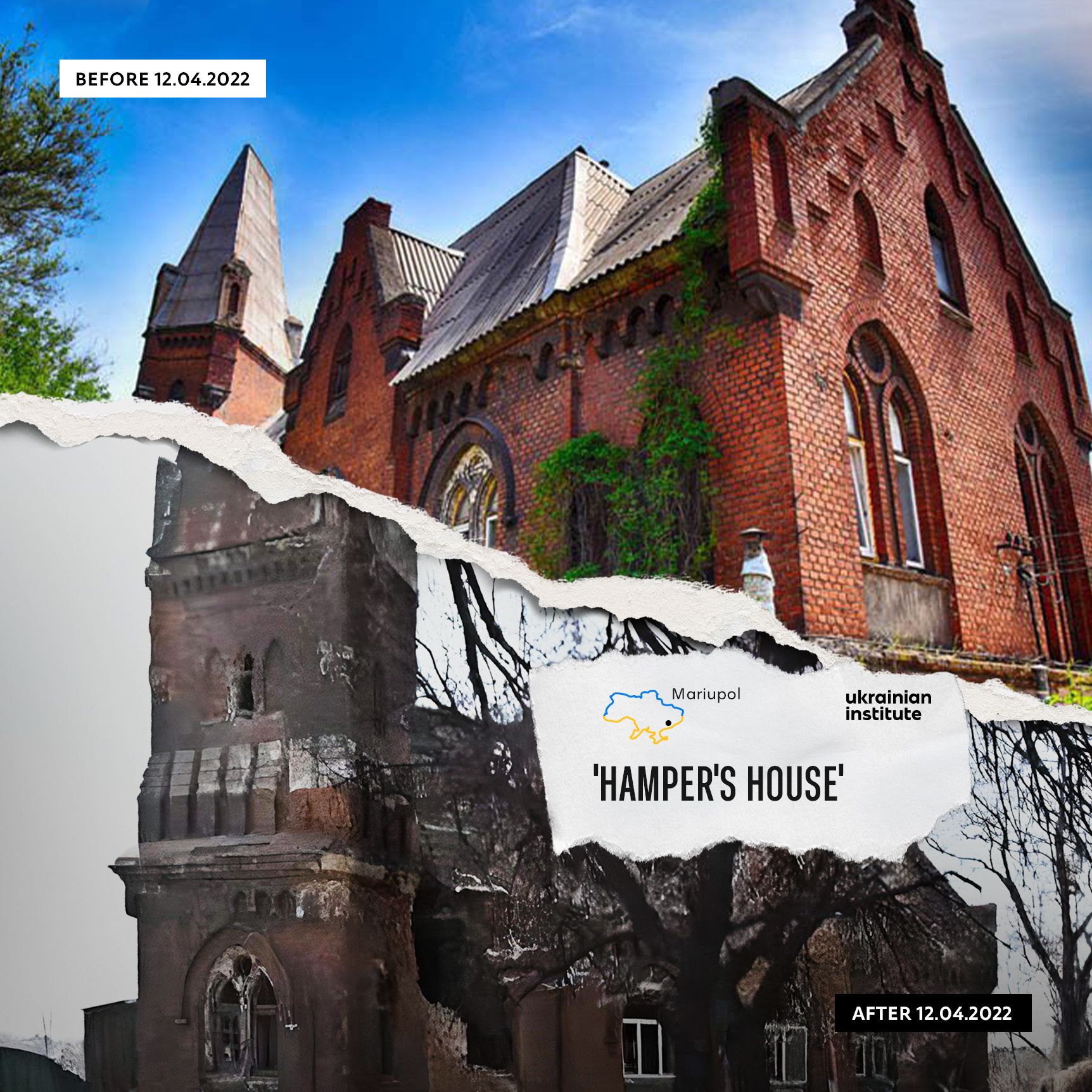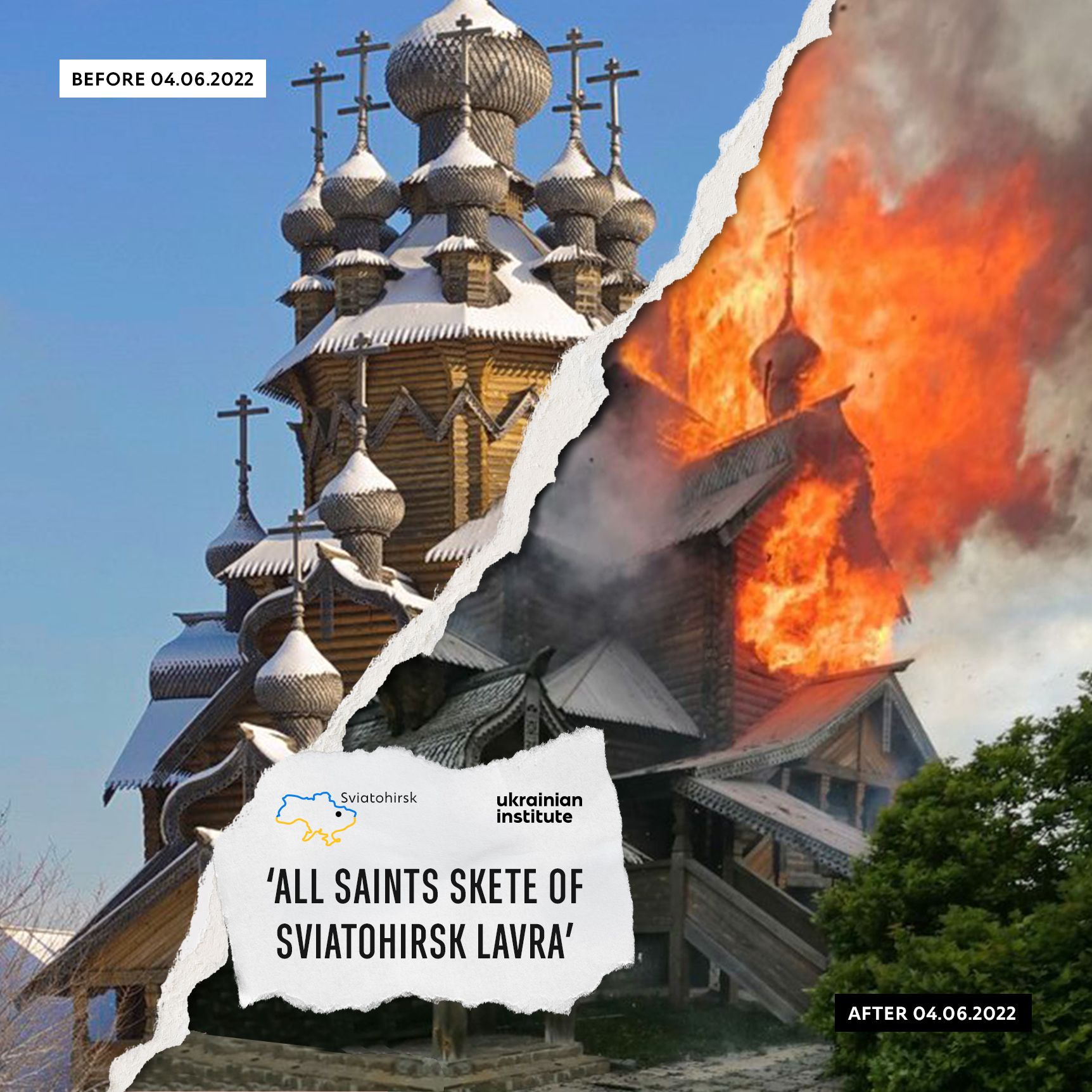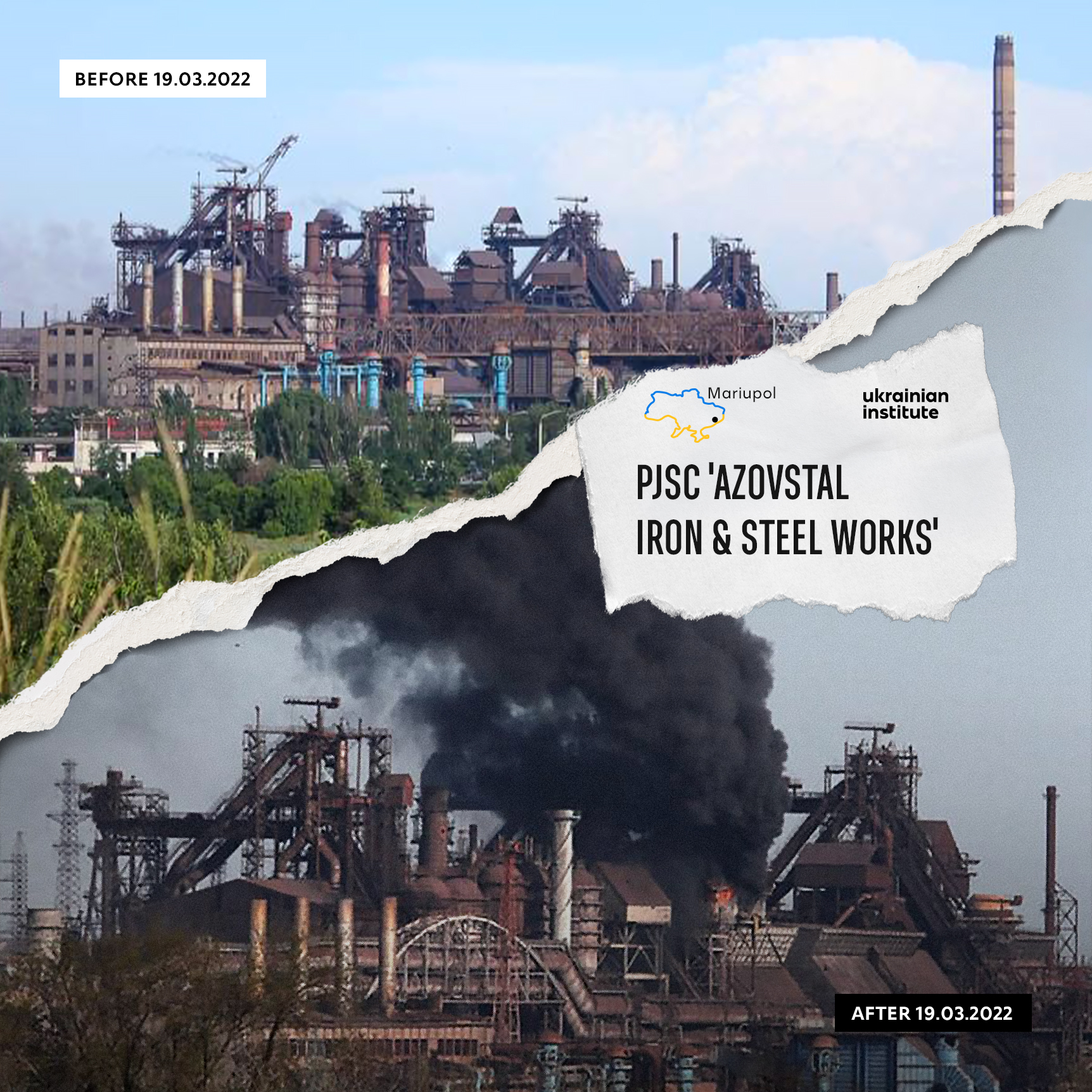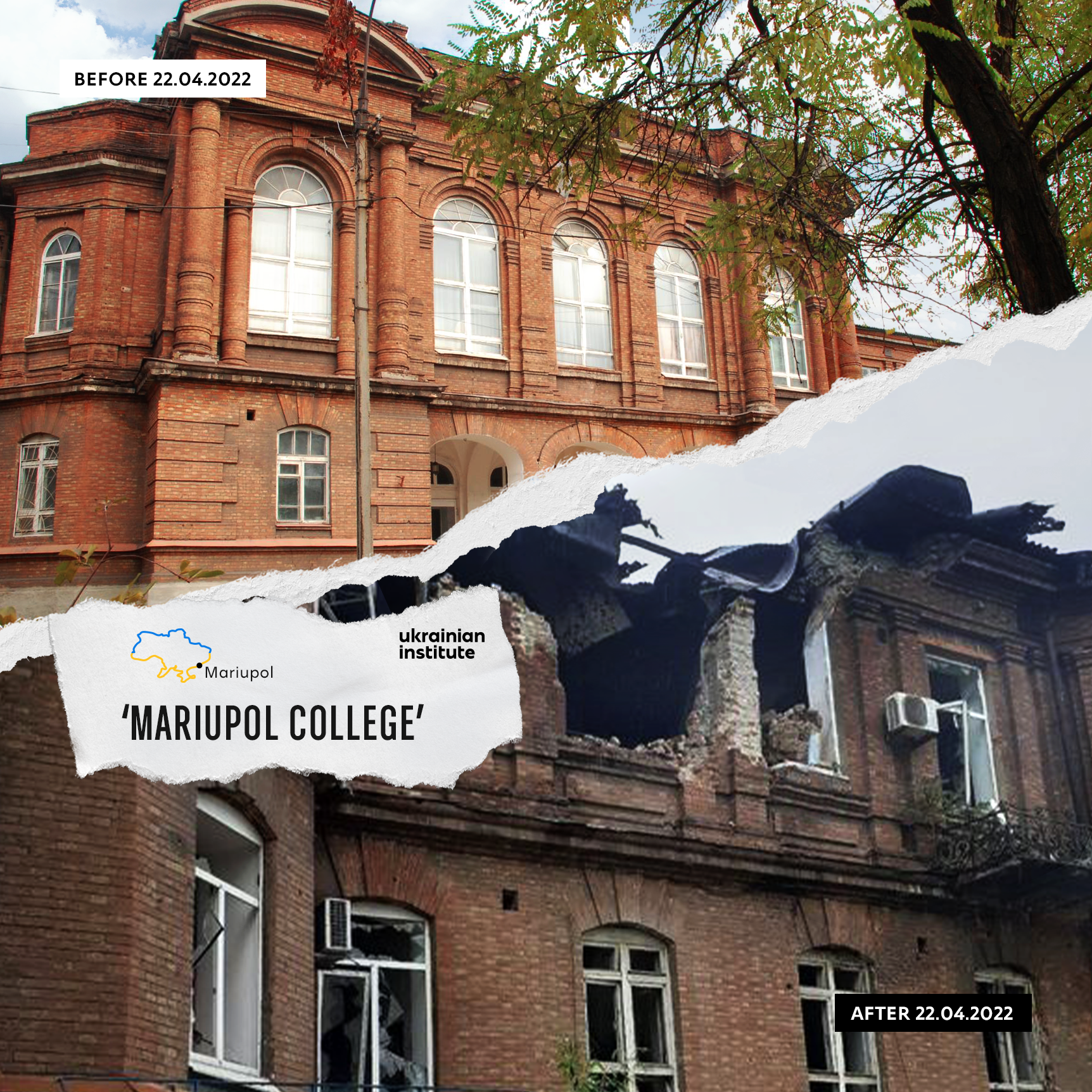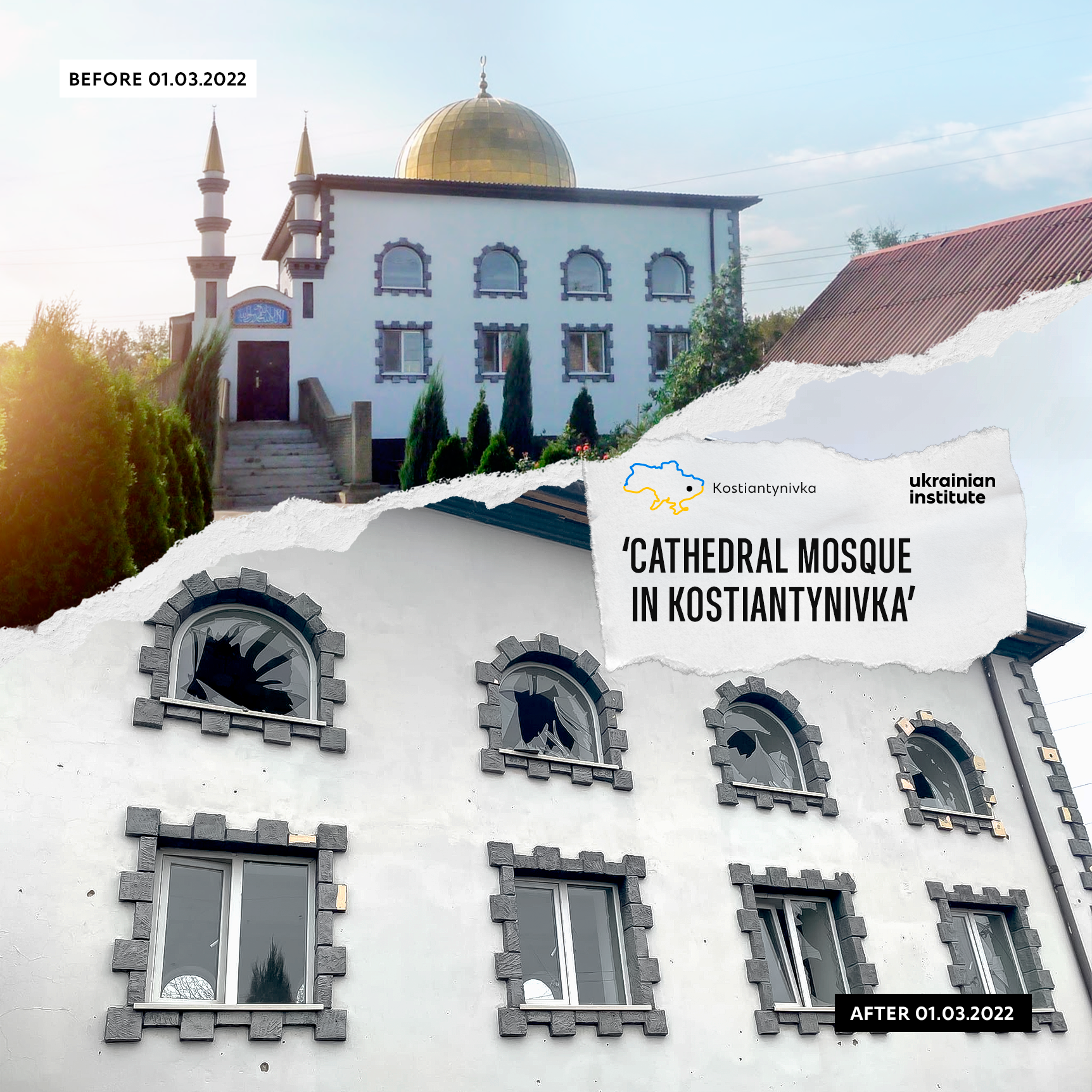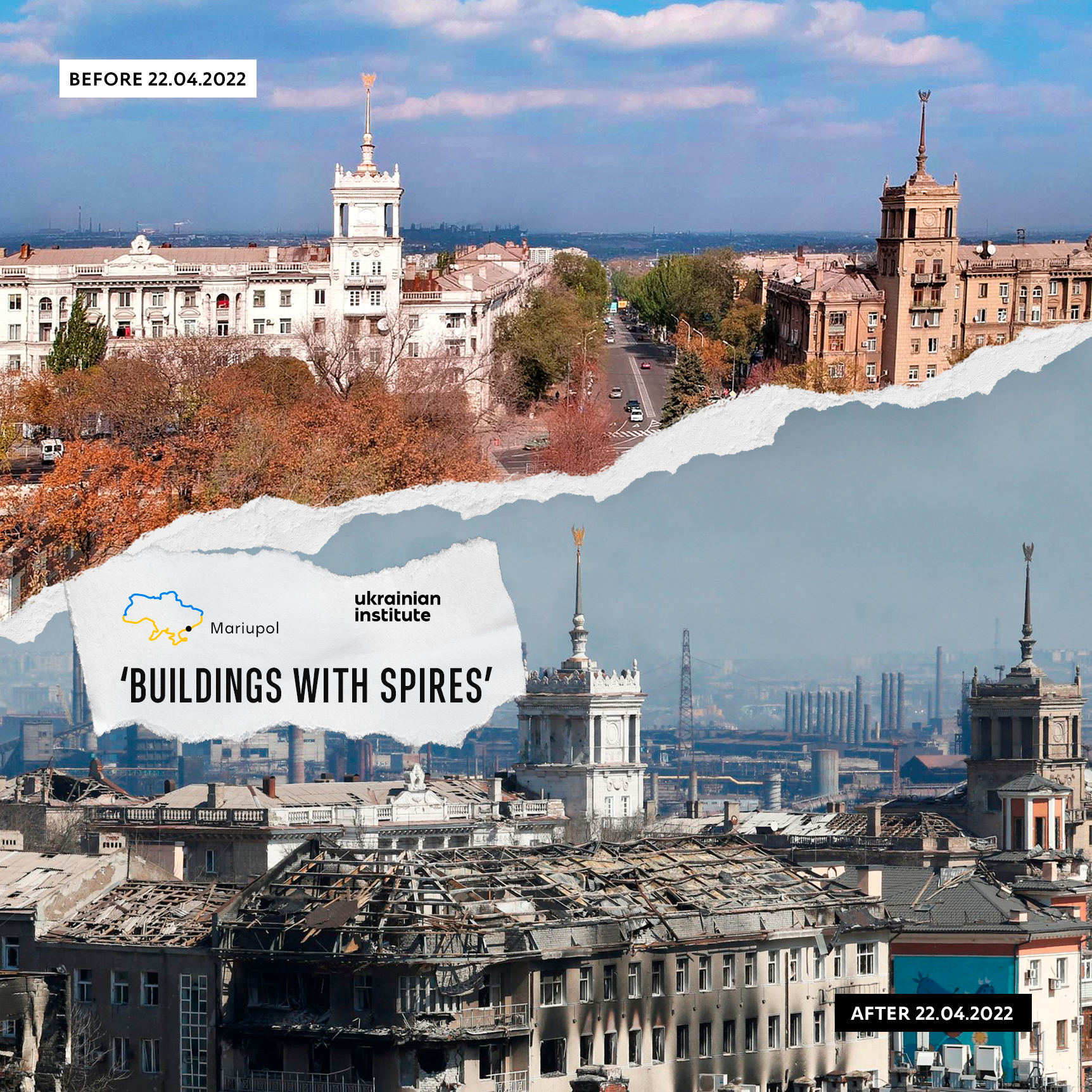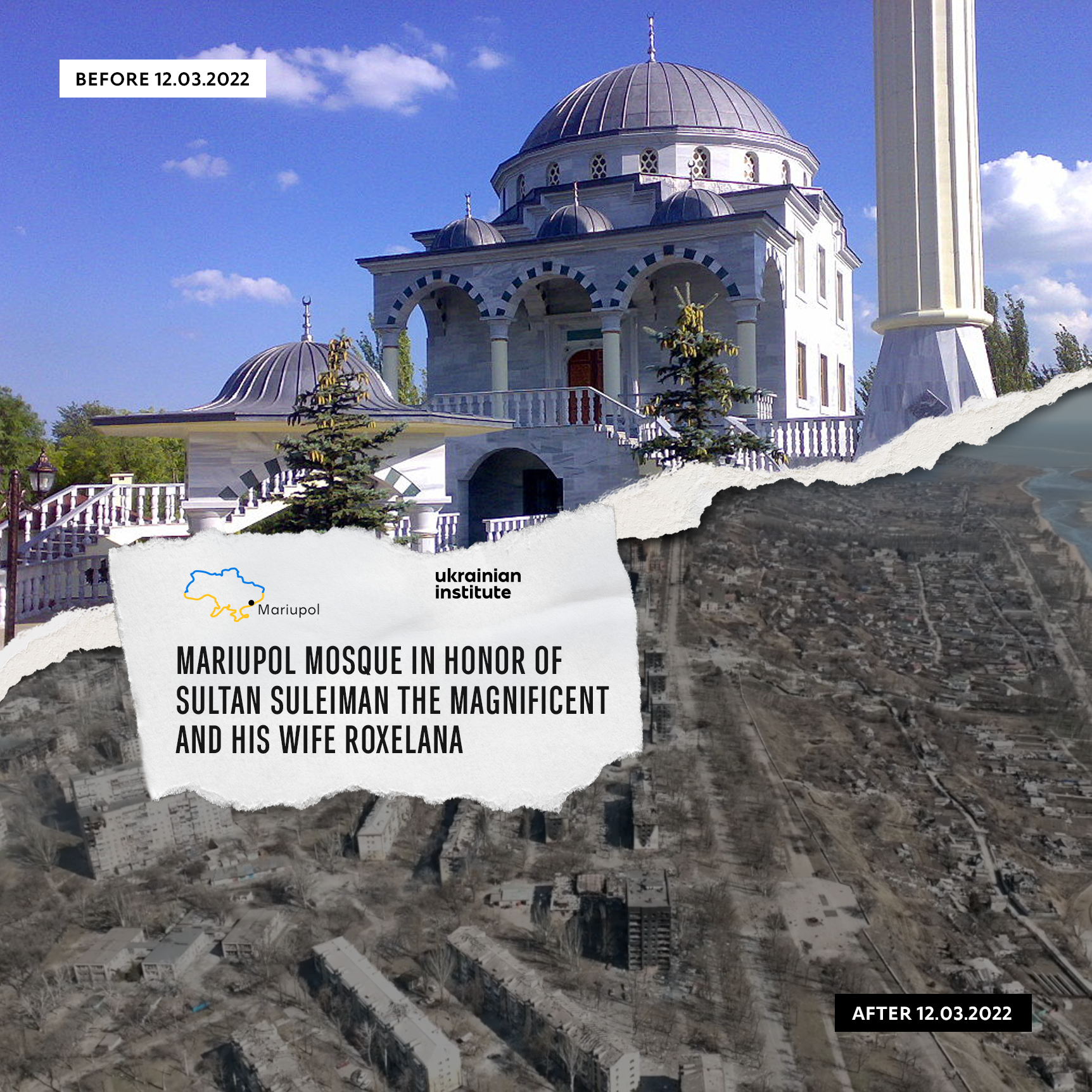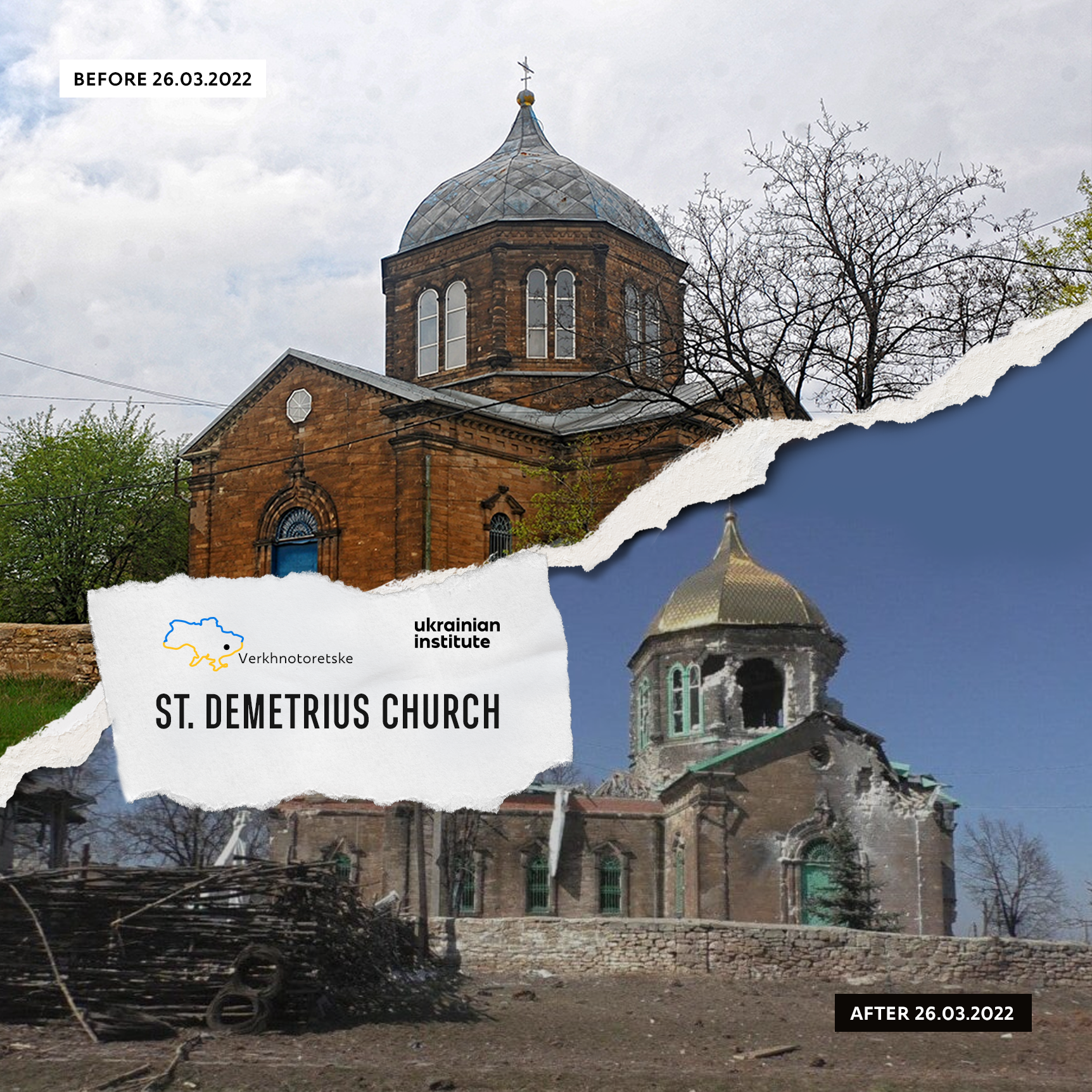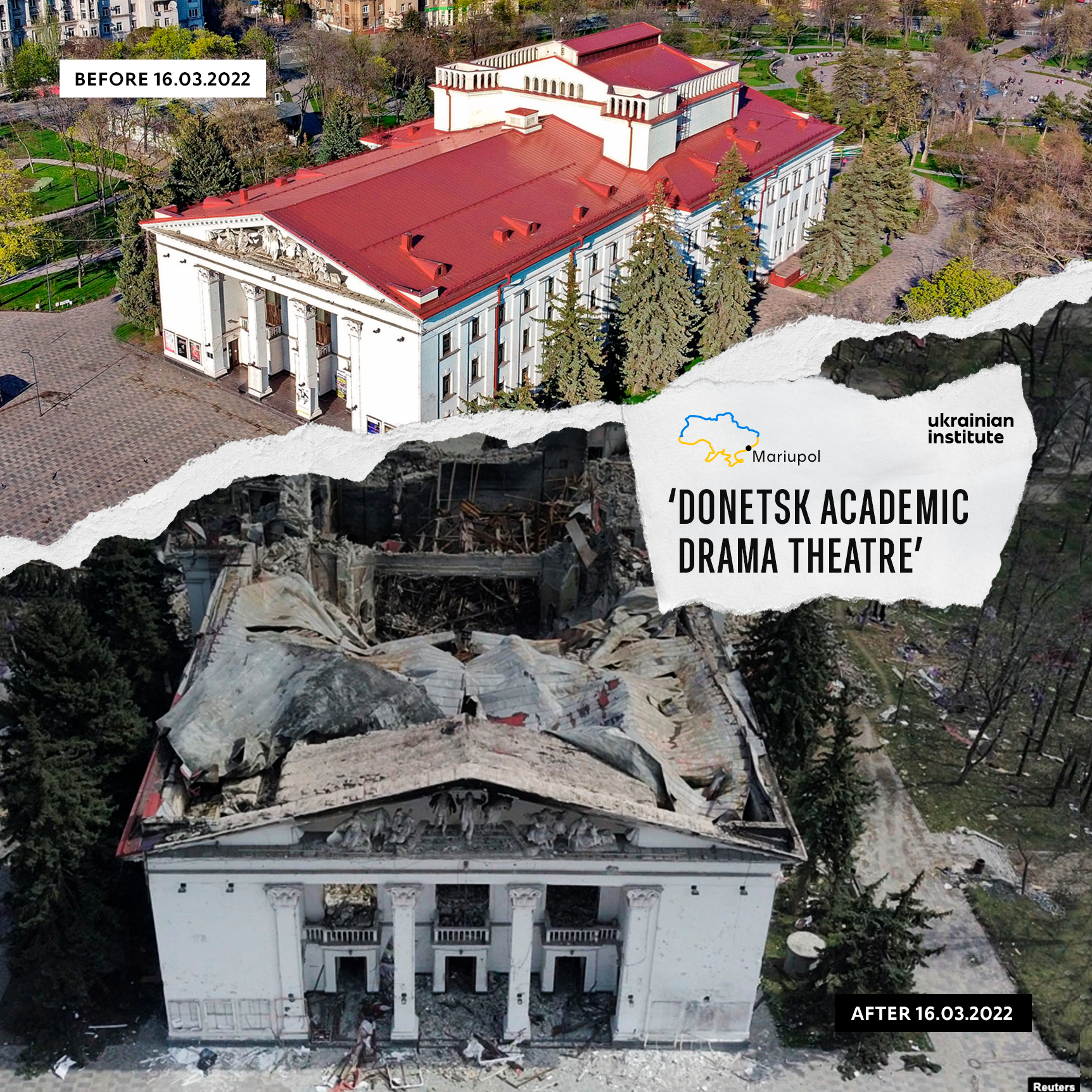
One of the oldest theatres in the Left-bank Ukraine.
The cultural centre of the city and the only professional theatre in Mariupol, which has become a symbol of humanitarian catastrophe in 2022 inflicted by Russia, has turned into a mass grave for hundreds of people hiding there from Russian missiles.
The building of the Mariupol Drama Theatre was constructed in the 1956–1960s in the style of the Soviet Monumental Classicism. The pediment was decorated with the sculptural composition of steelworkers and husbandmen representing main jobs in Pryazovia land, where Mariupol is located. There are also sculptures of art patronesses performing the praise ode.
A big auditorium with 800 seats, 143 theatre seasons, and about 50 actors in a troupe. During the spring of 2022, the theatre was full of people again: not drama spectators, but the witnesses of the real invasive Russian war against Ukraine. Hundreds of Mariupol residents were hiding in the theatre basements with their children.
Since people believed the enemy would follow the international law of war, they wrote the word ‘Children’ on the asphalt on both sides of the theatre in big letters in Russian. However, the Russian occupants dropped a heavy bomb on the theater on March 16 intentionally, neglecting all the signs and inscriptions. The central part of the building was entirely destroyed. About 600 people were found dead under the ruins — mainly women, kids, and the elderly.
Several European countries immediately expressed their solidarity with Ukraine. On March 17, 2022, the Italian Minister of Culture Dario Franceschini declared the willingness of the Italian government to reconstruct the Mariupol Drama Theatre. The Deutsches Theater in Berlin followed by holding an action of support to Ukraine by writing the word ‘Children’ in Russian at the entrance. Similar events took place in Vienna and Warsaw.
Ukrainian heroes had been defending Mariupol for almost three months in extremely difficult conditions, before the occupiers finally seized the city. It was not the Mariupol everybody knew before. Instead, it was what was left of the city: scorched land and destroyed buildings. At one of the volunteer centres, kids who fled Mariupol said: ‘There is no city any more. But you can come visit it as the sea is still there.’ In Mariupol, there is now just the Azov sea and the sea of tears, grief, and Russian war crimes. Russian occupants have been desperately trying to eliminate the evidence of their crimes, the Drama Theatre being one of them.
Whatever stored the memories may now become a memory itself.

